Pete Kelly rifles through Mortons’ Archives and turns up the following road test reports, from 1958 and 1960 respectively, which show how the motorcycle press of the day rated Royal Enfield’s 496cc Meteor Minor de Luxe parallel twin and 499cc Bullet single.
Right, you’ve got the deposit together (or at least have an old bike to trade in) and fancy a brand new 500cc Royal Enfield – but which one do you prefer, the single or the twin? I’m talking about 50-odd years ago, by the way…
Fifteen years ago, a fellow journo piecing together a similar comparison came up with the ace headline ‘One thump or two?’. Oh, if only I’d thought of that one!
Enjoy more Old Bike Mart reading every month.
Click here to subscribe & save.
From the pages of The Motor Cycle dated June 26, 1958 and Motor Cycling dated May 5, 1960, this month’s archive feature compares the road tests of the 496cc Meteor Minor de Luxe twin and the 499cc Bullet single respectively – and the overall performances were a lot closer than you might think.
The history of the Meteor goes back to 1949, when Royal Enfield came out with its own version of the parallel twin. The plunger-framed model was the forerunner of a range of twins which included the larger capacity Super Meteors and Constellations, and culminated in the mighty 750cc Interceptor.
The Bullet name for the 350cc and 500cc singles was first coined in 1932, but the first Bullet to bear any similarity to the one Motor Cycling tested in 1960 was the G model of 1935.
We’ll start our ‘twin v single’ comparison with The Motor Cycle’s 1958 account of the Meteor Minor de Luxe which had been announced just two months previously.

One of a trio of new high-performance twins, it had many features in the established RE tradition and those that were new or nearly so.
“Among those in the first group,” wrote the road tester, “are the use of separate iron cylinder barrels with heavily-finned light-alloy heads; a one-piece cast-iron crankshaft; a half-gallon oil compartment formed integrally with the crankcase; a four-speed Albion gearbox bolted to the rear of the crankcase; and a vane-type cush drive in the rear hub.” There was also as transmission shock absorber in the clutch centre.
The lightweight welded tubular frame, rear chain enclosure and 17in wheels had been confined previously to the popular Crusader models, but the siamesed exhaust pipes, scissor-type clutch control mechanism and 7in diameter front brake in a full-width hub broke new ground.
The reviewer remarked on the relatively low 29½in seat height afforded by the smaller wheels, but felt that the seat edges, which tended to dig into the legs, could have been more rounded.
Steering was pleasantly light and positive, and riding the Meteor Minor to a feet-up standstill was child’s play.

The generous steering lock gave a 15ft turning circle, and while stability on greasy surfaces was of a very high order, the pitching of the rear suspension gave the bike a tendency to weave on fast, undulating corners.
Impressed by the Meteor Minor’s stopping ability, the road tester wrote: “Braking was first class at all speeds. The controls were light to operate, yet not too light, and were progressive in action so that there was ample sensitivity for wet or slippery conditions.
“When the road surface permitted, the model could be pinned down really firmly, with both tyres squealing, from a traffic crawl or from top speed. Several hours of riding in teeming rain failed to impair braking efficiency.”
The 70 x 64.5 bore and stroke of each cylinder was identical to the Crusader’s, but there the similarity ended. “In external appearance, the unit is a scaled-down version of the 692cc Constellation engine, which in turn is based on that of the Super Meteor,” wrote the tester.
“Starting proved to be simple and reliable – throttle set as for fast riding, air lever closed and carburettor tickled moderately. The kick-starter is fairly low geared, so little effort was required to swing the engine over compression, and the unit usually came to life at the second kick.
“A first-time start without any preliminaries was the rule when the engine was warm.
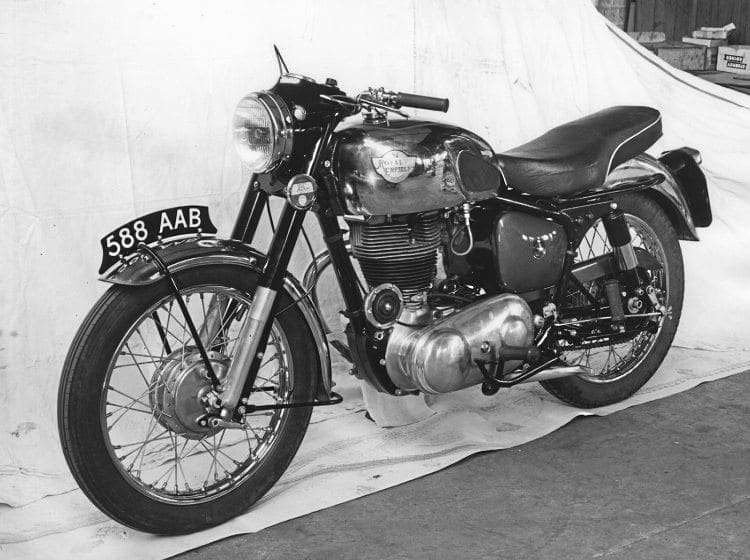
“Smooth running and unusually supple transmission combined to make the use of top gear quite happy in areas with a 30mph speed limit. Indeed, the effectiveness of the two rubber-block transmission shock absorbers is emphasised by the minimum non-snatch speed in top gear of 13mph.”
On the open road, the engine cheerfully undertook any amount of hard work without tiring.
Under average conditions, use of half-throttle gave an indicated speed of about 75mph.
At up to 60mph in top there was a pleasing absence of vibration; at 70mph it was perceptible but not objectionable; but from 75mph it could be felt through the dual seat – the one drawback of the parallel twin.
The usual term “adequate at normal speeds” damned the headlamp with faint praise, but the deeply-valanced mudguards (how I hate the word ‘fender’) kept lots of road muck off the rider.
The highest one-way speed recorded at the MIRA proving ground was 97mph, with a terminal speed at the end of a standing-start quarter-mile of 76mph, and a fuel consumption of 85mpg at 30mph and 58mpg at 60mph.
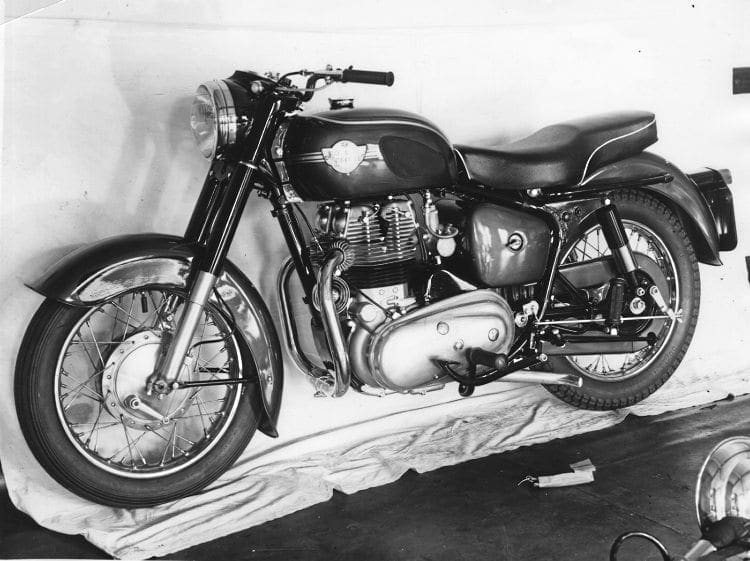
With purchase tax added, the price in 1958 was £274 9s 0d.
Now for the 1960 499cc Bullet which, with lashings of chrome in the Royal Enfield tradition of the time, was a very handsome machine indeed.
“So long as the British motorcycle industry continues to produce machines of the calibre of the current Royal Enfield Bullet,” began the road tester, “there is no need to debate upon ‘the survival of the single’.
The Bullet has indeed survived – right into the 21st century – but of course it is no longer made here, but in Chennai, India (which only a few weeks ago was suffering from terrible floods).
From page 18.
“A straightforward ohv design, as this sports roadster proves, can produce ample performance, combined with exceptional fuel economy,” continued the scribe.

“The present 499cc model was developed, in essentials, for the 1959 season. New features then introduced were an aluminium cylinder head, an increase in compression ratio, a 13⁄16in-bore Amal carburettor with downdraught induction, a larger inlet valve and redesigned rocker mechanism.”
All this combined to give some impressive MIRA figures, including a top speed of 91mph and fuel consumption of 114mpg at 30mph and a 500-mile average of 74mpg.
“The valve-timing arrangements, combined with the not-too-harsh compression ratio of 7.3:1, made kick-starting a straight-forward job,” wrote the tester.
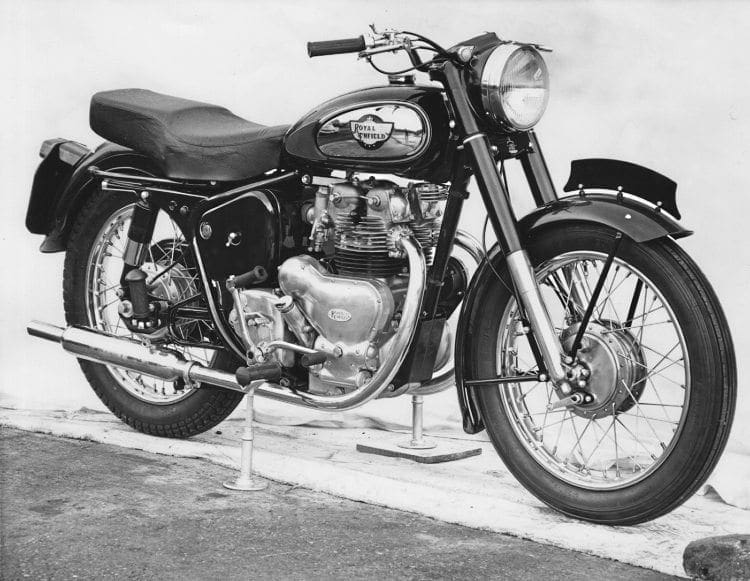
“A reasonably well-flooded carburettor (tickler very accessible) and air lever in the closed position produced the right kind of ready-starting mixture. The ‘valve-lifter’ (actually a decompressor) was there to be used, and if the obvious drill was followed there was never trouble in getting the engine to fire at the second or third try from cold.
“First gear was obtainable from rest without difficulty, and the neutral-finder, operated by a separate lever, was a boon in traffic riding. Generally, however, fairly determined pressure, up or down, was required on the gear-change pedal, and it seemed that the machine would be improved by making either the positive-stop or internal selector mechanism slicker and lighter in action.”
He liked the slight under-gearing of the machine, and the apt choice of ratios went hand-in-hand with the engine’s flexibility, and he wrote: “The Bullet, ideal for motorway riding, also has a townsman’s character all of its own.”
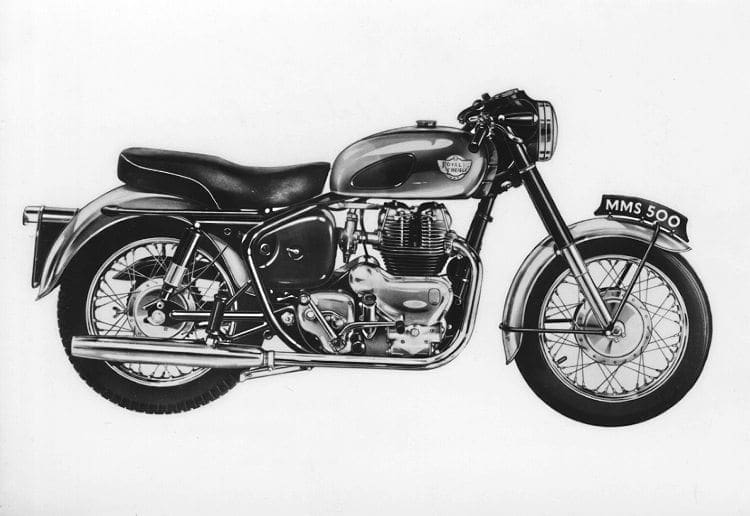
He was also impressed by the clutch, which was light yet positive in action, freed without leaving any trace of drag and no amount of hard work during the MIRA acceleration tests caused fatigue.
The speed at the end of a standing start 1000 yards was 79.98mph one way and 84.75mph the other – excellent figures for 1960.
Although the 6in front dual brake and 7in single rear might not sound like much by today’s standards, the tester wrote, rather puzzlingly: “From near-90mph speeds it was expedient to put bias first on rear braking, and then gradually to bring in this powerful front wheel stopper. It isa device to be respected, but it proved reliable, tireless and safe.”
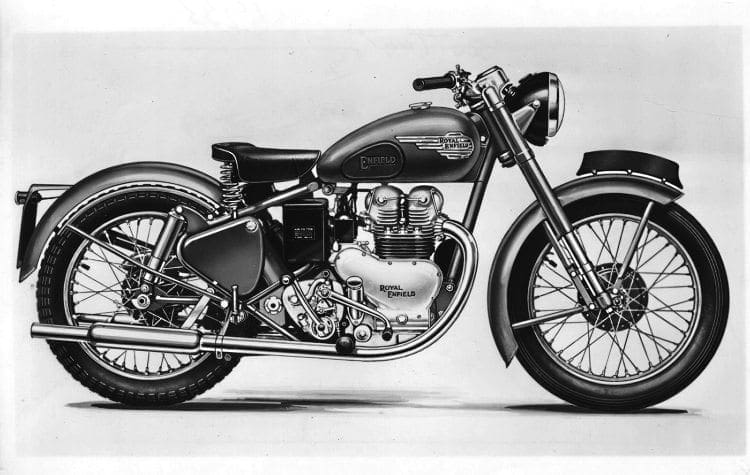
He praised the Bullet’s accessibility for routine maintenance, with easy-to-replenish oil filler points, and work on the tappets being made at the base of the push rods (where the cover came away without tools) rather than being a clearance adjustment at the rockers.
The distributor head, positioned where the earlier magneto used to be, had a clip-on cover, and although the coil, battery and air cleaner were all concealed, none was difficult to get at.
As for the nit-pickling, poor features were the stands (the prop stand could not be used safely on soft surfaces or appreciable cambers, and the centre stand needed a giant’s strength to deal with the 400lb-plus deadweight).
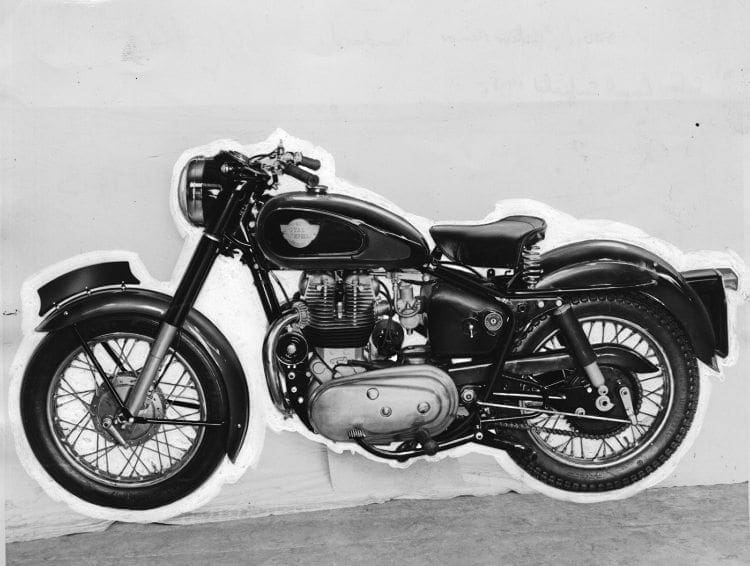
The tester also thought that the handlebar clutter could be cleaned up, and asked: “Why the separate horn and dipper controls?”
All in all, though, he summed up the Bullet as “a sound and economical design which provides swift, safe and reliable transport at a cost that speaks volumes for the efficiency of its design.”
With purchase tax added, the 1960 Bullet cost £249 15s Which would I choose? The Meteor – no, the Bullet – no, the Meteor…
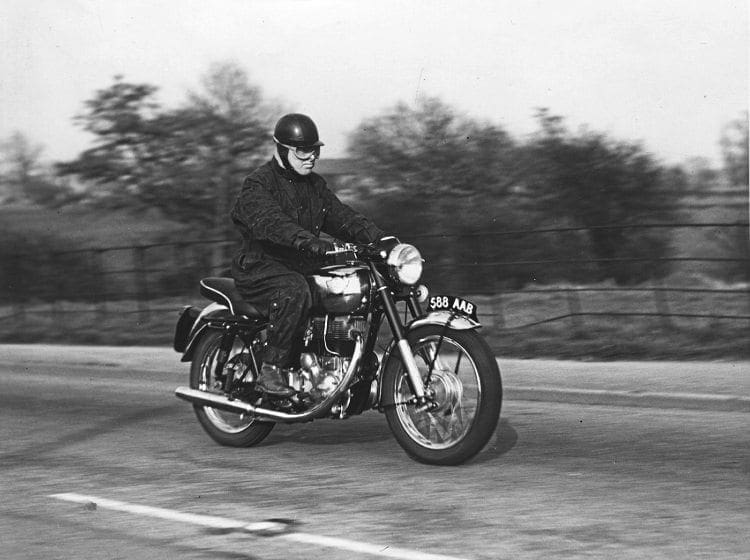
Read more News and Features in the November 2019 issue of Old Bike Mart – on sale now!




